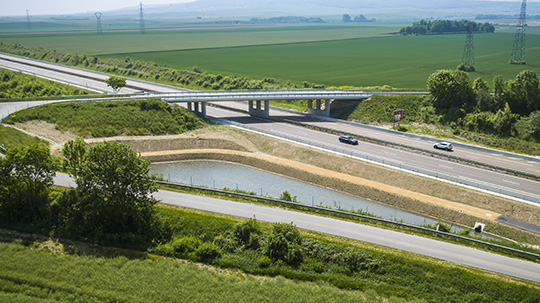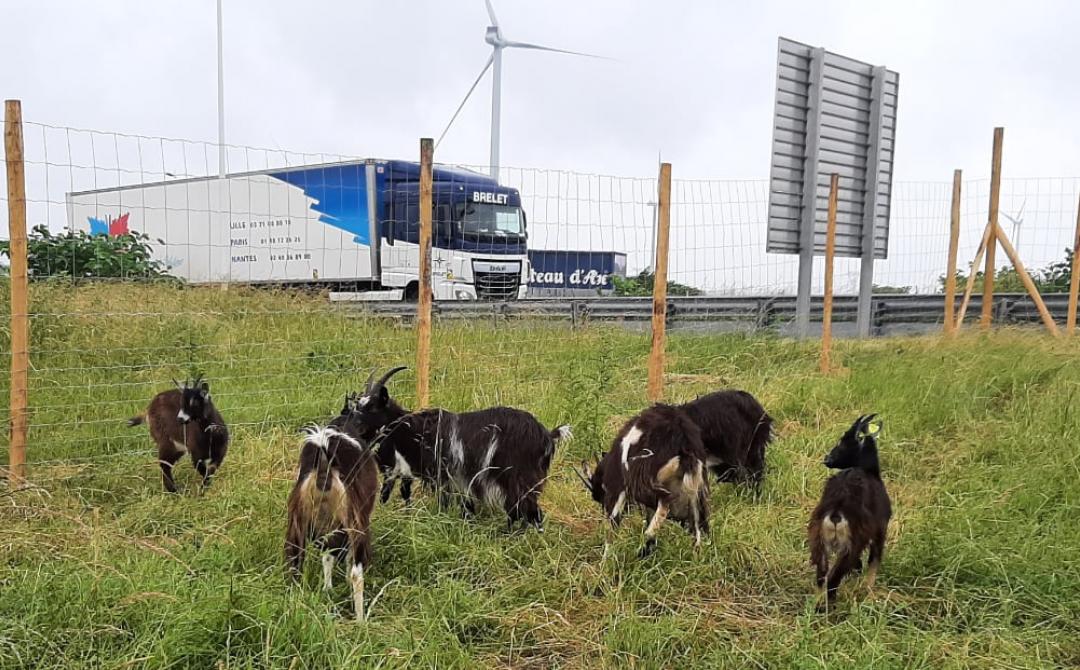In conjunction with our carbon footprint reduction, our CSR policy aims to reduce the environmental impact of motorways by preserving biodiversity, by improving waste recycling and recovery, and by reducing noise pollution.
La certification ISO 14001
Nous avons obtenu la certification ISO 14001 en juillet 2024. Celle-ci :
🌿 valide notre capacité à organiser, systématiser et professionnaliser notre approche des questions environnementales.
🌿 nous encourage à poursuivre nos efforts pour réduire l'impact de nos activités sur l'environnement.
Listen to the voices of Sanef: eco-route (FR)
We sometimes forget how lively the highway is, populated by teeming fauna, bordered by vegetation that constitutes a rich habitat. The highway is part of a complex ecosystem. It serves natural environments, crosses protected areas, forests, is home to wild species. This position imposes a certain responsibility. The infrastructures must respect as much as possible the natural environments where they are located. If the impact of transport on the environment is substantial, the motorway must limit its consequences.
Protecting water resources

In order to limit the impact of motorway runoff on the natural environment and water resources, the Sanef Group’s network is equipped with over 2,000 basins (anti-pollution, water control and infiltration basins).
The water resource protection programme continues with the creation of new basins and the renovation of older ones in works amounting to over 100 million Euros.
Facilitating and protecting the movement of animals
Infrastructures must adapt as much as possible to the natural environments in which they are built and not the other way round. This commitment is manifested, for example, through the construction of almost 100 wildlife passageways, both overground (eco-bridges) and underground (eco-culverts) in its motorway network to allow the safe crossing of various identified species (deer, amphibians, reptiles, etc.), like the wildlife passageway under the A4 in the urban agglomeration to the north of Strasbourg, and the eco-bridge linking the forested areas of Ermenonville and Chantilly over the A1.
After going into service, the wildlife passageways are subject to environmental monitoring in order to analyse their positive effects on the animals and to monitor their use.
Preserving wildlife around our work sites
As part of our environmental commitment, we focus on reducing our carbon footprint and preserving fauna and flora, the countryside, water resources and the comfort of local residents when constructing our motorways.
Take, for example, the construction of the Guerville viaduct on the A13 motorway, which is situated in the vicinity of a Natura 2000 zone and adjoins the Guerville quarry conservation area, a biodiversity reservoir of special ecological interest. Inventories of fauna and flora have identified protected species in the vicinity of the viaduct, including the Ledra aurita, or eared leafhopper, a protected insect in Ile-de-France, and also the peregrine falcon. So we have accordingly taken the necessary environmental precautions in order to preserve these species.
Eco-grazing to regenerate natural environments

We pursue our commitment to preserving natural environments with the use of eco-grazing throughout our networks.
Eco-grazing is a method for green space maintenance with multiple advantages:
- Reduction of environmental impact
- Increased biodiversity
- Efficient and effective maintenance
- Support for the local economy
Reducing noise pollution
Every 5 years, we draw up strategic noise maps that define the acoustic footprint of our motorways. These maps are made available to the public and provide any interested party with the opportunity of seeing in which sound pressure range they are situated.
We have also set up acoustic protection barriers in all the places where the sound pressure range exceeds regulatory thresholds (Noise Black Spots).
Documents to consult
